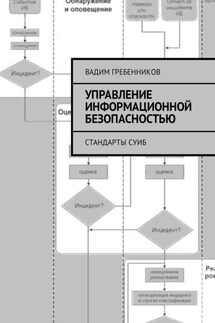IT Cloud - страница 42
It is advisable to choose small images for single tasks, for example, alpine: 3.5 :
esschtolts @ cloudshell: ~ (essch) $ docker pull alpine 1> \ dev \ null
esschtolts @ cloudshell: ~ (essch) $ docker pull ubuntu 1> \ dev \ null
esschtolts @ cloudshell: ~ (essch) $ docker images
REPOSITORY TAGIMAGE ID CREATED SIZE
ubuntu latest 93fd78260bd1 4 weeks ago 86.2MB
alpine latest 196d12cf6ab1 3 months ago 4.41MB
By slightly changing the code, we significantly saved on the size of the image:
image: alpine: 3.5
command:
– / bin / bash
– -c
– |
cd / app
apk –update add wget && rm -rf / var / cache / apk / *
tar -xf small_business_encode.tar.gz
rm -f small_business_encode.tar.gz
sed -i '5i php_value short_open_tag 1' .htaccess
sed -i 's / # php_value display_errors 1 / php_value display_errors 1 /' .htaccess
sed -i '5i php_value opcache.revalidate_freq 0' .htaccess
sed -i 's / # php_flag default_charset UTF-8 / php_flag default_charset UTF-8 /' .htaccess
chmod -R 0777.
volumeMounts:
There are also minimalistic images with pre-installed packages such as APIne with git: axeclbr / git and golang: 1-alpine .
Ways to ensure fault tolerance
Any process can crash. In the case of a container, if the main process crashes, then the container containing it also crashes. It is normal for the crash to occur during graceful shutdown. For example, our application in the container makes a backup of the database, in this case, after the container is executed, we get the work done. For demonstration purposes, let's take the sleep command:
vagrant @ ubuntu: ~ $ sudo docker pull ubuntu> / dev / null
vagrant @ ubuntu: ~ $ sudo docker run -d ubuntu sleep 60
0bd80651c6f97167b27f4e8df675780a14bd9e0a5c3f8e5e8340a98fc351bc64
vagrant @ ubuntu: ~ $ sudo docker ps
CONTAINER ID IMAGE COMMAND CREATED STATUS NAMES
0bd80651c6f9 ubuntu "sleep 60" 15 seconds ago Up 12 seconds distracted_kalam
vagrant @ ubuntu: ~ $ sleep 60
vagrant @ ubuntu: ~ $ sudo docker ps
CONTAINER ID IMAGE COMMAND CREATED STATUS NAMES
vagrant @ ubuntu: ~ $ sudo docker ps -a | grep ubuntu
0bd80651c6f9 ubuntu "sleep 60" 4 minutes ago Exited (0) 3 minutes ago distracted_kalam
In the case of backups, this is the norm, but in the case of applications that should not be terminated, it is not. A typical trick is a web server. The easiest thing in this case is to restart it:
vagrant @ ubuntu: ~ $ sudo docker run -d –restart = always ubuntu sleep 10
c3bc2d2e37a68636080898417f5b7468adc73a022588ae073bdb3a5bba270165
vagrant @ ubuntu: ~ $ sleep 30
vagrant @ ubuntu: ~ $ sudo docker ps
CONTAINER ID IMAGE COMMAND CREATED STATUS
c3bc2d2e37a6 ubuntu sleep 10 "46 seconds ago Up 1 second
We see that when the container falls, it restarts. As a result – we always have an application in two states – raised or raised. If a web server crashes from some rare error, this is the norm, but most likely there is an error in processing requests, and it will crash on every such request, and in monitoring we will see a raised container. Such a web server is better dead than half alive. But, at the same time, a normal web server may not start due to rare errors, for example, due to the lack of connection to the database due to network instability. In such a case, the application must be able to handle errors and exit. And in case of a crash due to code errors, do not restart to see the inoperability and send it to the developers for repair. In the case of a floating error, you can try several times:








